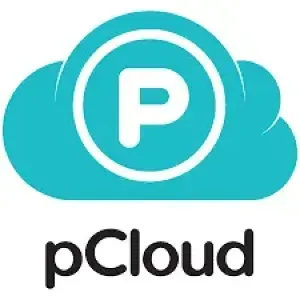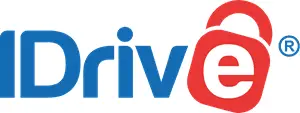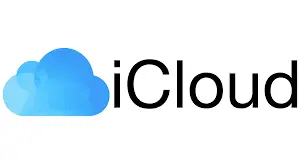In this article, you’ll learn:
Picture this: It's late evening, and you've just finished editing a documentary project that took months to perfect. You're tired but thrilled—tomorrow, you'll present it to a potential distributor. But disaster strikes overnight. Your hard drive fails, and with it, the results of months of your hard work vanish into the digital void.
This gut-wrenching scenario is all too real for content creators everywhere. Videos aren't just files; they can be irreplaceable pieces of art or critical business assets. That's why reliable video storage solutions are not just convenient—they're essential. Losing video content can mean missing deadlines, eroding trust, and facing financial setbacks.
In today's digital age, professional video storage does more than just safeguard your work. It enhances collaboration, streamlines workflows, and scales with your projects. Whether you're a solo videographer or part of a large team, finding the right video storage solution is crucial.
Join us as we explore the best video storage solutions for 2024. Let’s ensure your videos are not only stored but also secured and easily accessible.
Why Do You Need a Video Storage Service
When it comes to managing video content, cloud-based video storage is a game changer. Imagine having the ability to access your videos from anywhere in the world, at any time, without the fear of losing them to hardware malfunctions. That's the peace of mind cloud storage provides. It not only allows unlimited accessibility but also backs up your videos on secure, remote servers. This results in better protection against data loss due to physical damage, theft, or natural disasters.
Video files are notorious for their large sizes, especially as resolution and quality improve. Standard definition (SD) videos are manageable, but high definition (HD), 4K, and beyond require significant storage space. For instance, a single hour of 4K video can require upwards of 110 GB of storage. Cloud storage solutions offer scalable options, allowing you to pay for the storage you need, whether it's a few hundred gigabytes or several terabytes. This scalability is vital for businesses and creators who work with high-resolution video content and need to manage their resources efficiently. This flexibility makes cloud storage one of the best data storage solutions for video editing.
Cloud Storage vs. Personal Hard Drives
While personal hard drives have been the traditional choice for storing video files, they come with limitations. Hard drives can fail, get damaged, or become obsolete. Moreover, they don't offer the same level of accessibility as cloud storage. With a cloud service, multiple team members can access files simultaneously from different locations, collaborate in real time, and even revert to previous versions of files if necessary.
Cloud storage also simplifies the management of your video assets. Automated backup systems reduce the burden of manual backups, and advanced security protocols protect your data from unauthorized access. As your storage needs grow, cloud services can effortlessly scale to accommodate more data without the need for physical hardware upgrades.
In essence, cloud-based video storage is more than just a storage solution; it's a strategic tool that can greatly improve how you manage, access, and safeguard your video content, making it invaluable for anyone serious about their video projects.
What To Look For in a Video Storage Solution
When selecting a video storage solution, it's important to consider various features that align with your needs to boost productivity and protect your valuable content. Here’s a structured guide to what you should look for in a video storage service:
- File Format Flexibility
The service should support a wide range of video formats. Whether you're working with AVI, MP4, MOV, or more niche formats, flexibility in uploading and downloading various formats without compatibility issues is crucial for seamless operations.
For example, a video production team working on a documentary might need to compile footage from different cameras that output different file formats. A flexible storage solution allows them to handle these diverse files without time-consuming conversions, enabling smooth editing and collaboration.
- Efficient File Management
A good video storage solution offers robust tools to organize, search, and manage your files easily. Look for features like tagging, categorizing, and custom metadata fields that help keep your video library orderly and accessible.
- Automated Backups
Automated backups are essential for safeguarding your data against loss. Choose a service that regularly and automatically backs up your videos to remote servers, keeping your content retrievable if system failures occur.
Case in point, wedding videographers capturing once-in-a-lifetime events could lose important content without automated backups. If their primary storage fails, they can easily recover the footage from the backup, preventing potential client dissatisfaction and financial loss. Automated backups keep all precious video memories safe and accessible, even in unforeseen circumstances.
- Team Collaboration and Admin Tools
For teams, collaboration tools are vital. These include shared folders, file syncing, real-time editing, and commenting capabilities. Administrative controls for managing permissions and access levels are also important for maintaining project security and integrity.
For instance, a marketing team working on a video ad campaign can benefit from real-time editing and commenting to quickly iterate on ideas and feedback. Shared folders and admin controls make sure that only authorized team members can access sensitive project files, keeping the project secure and organized.
- Integrations
The ability to connect with other tools and platforms you use can significantly improve your workflow. Whether it’s editing software, content management systems, or communication tools, seamless integrations can streamline your processes and reduce manual work.
- Storage Capacity
Evaluate the amount of storage space available. Depending on your volume of work—whether it’s high-resolution 4K videos or extensive video archives—confirm that the service can meet your current and future storage needs.
- Security Measures
Security is crucial, especially when dealing with sensitive or proprietary content. Look for services with strong security features like encryption during transfer and storage, two-factor authentication, and regular security audits.
Just imagine a film production company working on a highly anticipated movie using these security measures to protect their footage from leaks or unauthorized access. Encryption makes intercepted data unreadable, while two-factor authentication adds an extra layer of protection and allows only authorized personnel to access the files. Regular security audits help spot and fix vulnerabilities, keeping the content safe throughout the production process.
- Scalability
A scalable video storage solution can expand with your needs. This means you can easily upgrade your storage capacity and features as your video production grows, without needing to switch services or facing significant downtime.
By considering these key aspects, you can choose a video storage service that not only meets your technical requirements but also improves your creative processes, keeping your projects running smoothly and securely.
Top Video Storage Solutions
In the quest to find the best video storage solutions, it's essential to compare various services based on their features, advantages, limitations, and costs. Let's dive into a comprehensive overview of leading video storage platforms, helping you choose the right service to effectively safeguard and manage your video content.

Dropbox
Dropbox stands out with its straightforward and intuitive cloud storage services, making it a top choice for managing and storing digital assets, including video files. Known for its user-friendly interface, Dropbox caters to both creative teams and individual creators, offering seamless access and easy sharing options across various devices and platforms.
Whether you're a solo freelancer or part of a sprawling enterprise, Dropbox has a plan to match. Its scalable solutions grow with your storage needs, ensuring you always have enough space for your video projects without any hassle.
The platform safeguards your valuable content with powerful encryption both during transit and when at rest, and enhances data protection with two-factor authentication, providing an extra layer of security against unauthorized access.
Key Features:
- Dropbox supports a wide array of video and media file formats, ensuring that users can store and access their content without facing compatibility issues.
- Users benefit from Dropbox's intuitive organizational tools that simplify file navigation, including folder tagging, file versioning, and easy link sharing for external collaboration.
- Essential to protecting your work, Dropbox performs automatic backups and syncs data across all linked devices, ensuring your video content is always up-to-date and retrievable.
- Dropbox boosts collaborative efforts through features like shared folders, document commenting, and synchronized updates, enabling team members to work together seamlessly from any location.
- Dropbox works smoothly with popular video editing software and other tools, streamlining workflows and minimizing the need for switching between applications.
Pros:
- Facilitates easy access and sharing of video files, enhancing collaboration.
- Keeps all your devices updated with the latest file versions.
- Works well with numerous apps and platforms.
Cons:
- Privacy concerns: Past concerns about privacy might be an issue for some users.
- Cost-effectiveness: Higher storage options can become pricey compared to other providers.
Pricing:
Dropbox offers several pricing tiers, starting with a basic free plan that includes limited storage space. For more demanding needs, premium options are available, such as the 2TB plan for $11.99 per month or $119.88 per year.

Google Drive
Google Drive features a versatile and widely-used cloud storage environment, ideal for storing and managing video files. Its seamless integration with Google’s suite of applications and services simplifies accessing and sharing video content, catering to both solo content creators and larger organizations. The platform's robust cloud infrastructure ensures videos are accessible from any device, at any time, boosting collaboration and productivity.
One standout feature of Google Drive is its scalability. Users can start with a modest amount of storage and scale up as their needs grow, making it an excellent choice for video content creators whose storage needs may expand with more projects or higher video quality. Whether you’re working with standard-definition video files or large-format 4K videos, Google Drive can accommodate your growing storage requirements with ease.
Security on Google Drive is a priority, employing strong protocols to safeguard your data. Video files stored on Google Drive are protected by encryption both in transit and at rest, minimizing the risk of unauthorized access. Additionally, users can set custom sharing permissions to control who views or edits their videos, ensuring that content is accessible only to intended recipients.
Key Features:
- Broad file format support for various video types.
- Real-time collaboration and file sharing.
- Integration with Google’s apps like Google Photos and Google Docs.
- Powerful search functionality that allows users to find files quickly.
- Automatic video backups to safeguard against data loss.
Pros:
- High compatibility with multiple devices and platforms.
- Generous free storage tier.
- Strong collaborative tools integrated with Google Workspace.
Cons:
- Privacy concerns have been raised due to extensive data collection.
- Larger files can sometimes slow down synchronization.
Pricing:
Google Drive offers 15 GB of free storage, which is often ample for casual users. For more extensive needs, Google Workspace plans start at $10.80 per user per month, providing additional storage and more enhanced business features. More comprehensive plans with expanded storage and capabilities are also available, making it suitable for high-volume users and enterprises.

Pics.io Digital Asset Management (DAM)
Pics.io Digital Asset Management (DAM) offers a comprehensive solution for managing and storing digital assets, including video files. Designed to support the needs of creative teams across various sectors, Pics.io seamlessly integrates with popular storage services like Google Drive digital asset management and Amazon S3, and also provides its own storage options. This versatility allows organizations to store and access their digital assets in the most efficient way possible.
Pics.io excels in version control, which is vital for creative teams. This feature allows users to efficiently manage multiple file versions, visually compare them, and keep a detailed record of revisions. This is particularly useful for video files, enabling easy tracking and reviewing of changes. The system’s visual difference tool and detailed version history streamline the revision process, significantly enhancing project management.
Pics.io is specifically designed to handle large file sizes, making it perfect for managing high-resolution video content essential in professional video production. The platform offers comprehensive security measures, including advanced encryption and secure access protocols, to protect your digital assets. Additionally, its scalability means that as your business expands, Pics.io can seamlessly adapt, increasing storage capacity and adding features to meet growing demands without compromising on performance or security.
Key Features of Pics.io DAM:
- Supports a wide range of video formats, ensuring compatibility and ease of access.
- Advanced tools for organizing, searching, and managing files with features like tagging, categorizing, and custom metadata fields.
- Provides data protection with automated and regular backups to remote servers.
- Facilitates teamwork with shared folders, real-time editing, and admin tools for permission management.
- Offers integrations with various tools and platforms.
- Easily scales to accommodate growing storage needs without the requirement for physical hardware enhancements.
- Strong security protocols including encryption and two-factor authentication to protect sensitive data.
Pros:
- Scalable storage solutions adapt to organizational growth.
- Strong focus on security and data protection.
- Strengthens collaboration with extensive admin and teamwork tools.
Cons:
- Initial setup and integration may be a bit challenging for those unfamiliar with metadata. However, Pics.io offers trainings for all team members if needed.
Pricing:
Pics.io offers several pricing tiers to suit various needs and budgets. Each plan provides varying levels of storage capacity, security features, and access to customer support. The Solo package starts at $50 per month. For teams of up to 10 people, the pricing is $150 per month or $1,620 per year for the entire team. There are also tailored plans available for small to medium teams and large enterprises.
Adobe Creative Cloud
Adobe Creative Cloud is a comprehensive storage solution for video content creators and professionals within the Adobe ecosystem. It integrates seamlessly with tools like Premiere Pro and After Effects, supporting a variety of video formats for enhanced workflow flexibility. Users can access, share, and edit videos globally thanks to its cloud-based capabilities.
Scalability is central to Creative Cloud, catering from individual creators to large enterprises with increasing storage needs and collaboration tools. This allows for the handling of larger files and more complex workflows as projects grow, without the need to migrate to other platforms.
Security is rigorously enforced, with strong encryption for data both in transit and at rest, complemented by advanced permission settings. This approach keeps user data, especially sensitive content, secure and private across all levels of access.
Key Features:
- Seamless integration with Adobe’s video editing software.
- Cloud-based access allows editing and sharing from anywhere.
- Support for a wide range of video formats.
- Automated backup and version control systems.
- Real-time collaboration tools within Adobe’s software.
Pros:
- Highly integrated with Adobe’s editing tools, offering a streamlined workflow.
- Flexible storage solutions scalable for different user needs.
- Strong security features including encryption and customized access controls.
Cons:
- Relatively expensive compared to basic cloud storage services.
- Requires a learning curve for those unfamiliar with Adobe’s interface.
Pricing:
Adobe Creative Cloud offers various pricing tiers, starting with individual plans at approximately $28.79 per month for basic access and going up to enterprise solutions that are custom-priced based on the specific needs and scale of the business. Each tier includes access to Adobe’s creative software along with different amounts of cloud storage.

pCloud
pCloud features a versatile and secure cloud storage environment, making it an excellent choice for video storage. Esteemed for its user-friendly interface and comprehensive file management capabilities, pCloud enables effortless uploading, managing, and sharing of videos across multiple devices. The platform is particularly valued for its rapid upload and download speeds, a significant advantage for video content creators who regularly work with large files.
Scalability is a strong point for pCloud, accommodating both individual users and large enterprises. The service offers a variety of plans with storage capacities ranging from a few gigabytes to several terabytes. This flexibility allows users to increase their storage as their needs evolve, making pCloud ideal for content creators and businesses handling complex projects and high-resolution footage.
In terms of security, pCloud protects data using TLS/SSL encryption for data transfers and 256-bit AES encryption for files at rest and in transit. Additionally, pCloud has an optional Crypto subscription, providing client-side file encryption before uploading, adding an extra layer of security against unauthorized access.
Key Features:
- High-speed data transfer
- Multi-device access and synchronization
- File versioning and rewind capabilities up to 30 days
- Shared link and file request features
- Integration with third-party applications like Adobe Photoshop and Lightroom
Pros:
- High data transfer speed boosts productivity for video editors.
- No file size limits, allowing for the storage of large video files.
- Client-side encryption option available for heightened security.
Cons:
- Client-side encryption requires an additional subscription.
- Limited collaboration tools compared to other cloud storage options.
Pricing
pCloud offers competitive pricing with a lifetime access option, which is unique in the cloud storage market. Plans start at €199 per year for 500 GB and go up to €399.99 per year for 2 TB. They also offer a one-time payment for lifetime plans, which can be particularly cost-effective for long-term users.

IDrive
IDrive is a great choice for individuals and businesses looking for secure video storage and backup. It works with a wide range of devices, including PCs, Macs, iOS, and Android, so you can store, sync, and access your video content from anywhere.
IDrive offers flexible storage options to suit both small and large users. Personal plans start at 5 TB, and business plans provide even more storage. This makes it perfect for those who need more space as their video library grows.
To keep your video files safe, IDrive uses 256-bit AES encryption during transfer and storage. It also offers a private encryption key, meaning only you can access your data. Plus, with features like two-factor authentication, your account security gets an extra layer of protection.
Key Features:
- Supports backup for PCs, Macs, iOS, and Android devices.
- Automatically backs up changes to video files in real-time.
- Maintains up to 30 previous versions of all video files.
- Allows users to view and restore from historical versions of their video data.
- Manages video backups and restores remotely through a web-based console.
- Syncs video files across devices and shares them securely with others.
Pros:
- Extensive backup options for multiple devices.
- Strong security features, including private encryption keys.
- Affordable pricing with large storage capacities.
- Continuous data protection and file versioning.
Cons:
- User interface can be complex for beginners.
- Initial backup can be slow for large data sets.
Pricing:
The price for a personal plan starts at $69.50/year for 5TB of storage. Business plans start at $99.50/year, with options to scale up to higher capacities based on your needs.

Apple iCloud
iCloud, Apple's integrated cloud service, delivers a seamless storage solution primarily tailored for users within the Apple ecosystem. As a video storage solution, iCloud facilitates efficient storage, management, and access to video files across all Apple devices. This integration proves particularly advantageous for content creators using Apple products for video production, enabling smooth synchronization and instant access to content anytime and anywhere.
iCloud is known for its user-friendly interface and ease of use, which extends to its scalability options. Users can start with a modest amount of free storage and choose to upgrade to larger storage plans as their needs grow. This scalability is coupled with iCloud's seamless integration across all Apple devices, making it exceptionally easy to manage large video files and complex projects without ever leaving the Apple ecosystem. The service automatically updates all changes across devices, ensuring that users always have access to the latest versions of their files.
Security is a cornerstone of all Apple's services, and iCloud is no exception. iCloud protects data with end-to-end encryption, ensuring that video files are only accessible to the user and their chosen recipients. This includes encryption both in transit and at rest. Additional security measures include two-factor authentication, which adds an extra layer of security by requiring a secondary form of verification to access accounts.
Key Features:
- Keeps all devices updated with the latest data.
- Allows sharing of storage plans and files among family members.
- Works seamlessly with apps like Photos, iMovie, and other Apple applications.
- Options to recover recently deleted files and revert to previous versions.
Pros:
- Robust integration with Apple products and applications.
- High-level security and privacy features.
- User-friendly interface and ease of use across devices.
Cons:
- Limited functionality and less optimized for non-Apple users.
- More expensive compared to some other cloud storage options when considering higher storage capacities.
Pricing:
iCloud offers a free plan with 5 GB of storage, which is often sufficient for basic backup needs but may be inadequate for extensive video storage. The paid plans start at $0.99 per month for 50 GB, $2.99 for 200 GB, and $9.99 for 2 TB, which also supports Family Sharing.

Box
Box delivers a cloud storage solution tailored for businesses and professionals, emphasizing the secure and efficient management of video content. Serving a range of industries, Box includes powerful collaboration tools and integrations with major business applications, facilitating real-time video project collaboration and enhancing productivity for remote teams.
The platform is scalable, accommodating the needs of small businesses and large enterprises. Users appreciate its intuitive interface that eases uploading, organizing, and sharing of large video files. Box further simplifies workflow with automated file management, which saves time and minimizes manual input.
Box safeguards video files with enterprise-grade encryption for data both in transit and at rest. It also provides detailed admin controls, including audit logs and customizable permissions, ensuring that video content is accessible only to authorized users, thus maintaining strict data security.
Key Features:
- Allows team members to collaborate on projects directly within the platform.
- Integrates seamlessly with over 1,400 apps including Office 365, Adobe, and Slack.
- Features powerful search tools to quickly locate files.
- Enables precise control over who can view, edit, or share content.
Pros:
- Strong focus on collaboration and integration with enterprise applications.
- Robust security features that meet compliance standards.
- Intuitive user interface with efficient file management capabilities.
Cons:
- Higher cost relative to some other cloud storage providers.
- Some features can be complex and may require a learning curve.
Pricing:
Box offers several pricing tiers aimed at different user needs. The Personal plan is free and offers basic features with 10 GB of storage. The Business plans start at $18 per user per month with a minimum of three users, offering unlimited storage and advanced collaboration tools.

Sync
Sync delivers a secure and efficient cloud storage solution tailored for video content creators and businesses managing large digital files. It features an easy-to-use platform that improves how users store, share, and manage their video files online. Emphasizing privacy and security, Sync keeps your video content safe and exclusively under your control, making it an ideal choice for professionals concerned with data privacy.
Sync offers scalable cloud storage suitable for both individual videographers and large organizations, with plans ranging from basic personal use to advanced enterprise solutions. This allows for easy adjustment of storage capacity to meet growing video archival needs without needing to switch services.
Personal key encryption ensures users maintain exclusive control over their encryption keys, preventing access even by Sync staff
Key Features
- Keeps your data secure during transmission and storage on Sync's servers.
- Track changes with file version history, letting you revert to previous versions if needed.
- Trash history and recovery options let you retrieve deleted files within a certain period.
- Easily share files and folders with team members or external partners, with customizable permissions.
Pros:
- High-level security with end-to-end encryption.
- Scalable storage options that grow with your needs.
- No third-party access to data, ensuring complete privacy.
Cons:
- Limited third-party app integrations compared to competitors.
- Higher price point for premium security features.
Pricing
Sync's pricing structure starts with a free plan offering basic features and limited storage, ideal for personal use or small projects. Paid plans start at $540.00 for 3 users per month when billed annually, offering additional storage space and access to advanced features such as comfortable collaboration tools and extended file recovery options.

Microsoft OneDrive
Microsoft OneDrive provides a reliable cloud storage solution tailored for video content creators who need easy access to their files across devices and platforms. Integrated seamlessly with Windows and Microsoft's suite of productivity tools, OneDrive is not only convenient for storing videos but also for collaborating on projects within the Microsoft ecosystem. This makes it an ideal solution for individuals and teams looking to streamline their workflow and boost productivity with familiar tools.
OneDrive offers a range of plans catering to various user needs, from individual creatives to large enterprises. The platform can comfortably accommodate increasing demands.
OneDrive employs multiple layers of protection to keep your data safe, including file encryption both in transit and at rest. It also offers options for personal vaults, providing an extra layer of security for sensitive information. Microsoft’s adherence to global security standards assures users of top-notch data protection.
Key Features:
- Seamless workflow with tools like Word, Excel, and PowerPoint.
- Share files or folders with internal or external collaborators, with the ability to set edit or view permissions.
- Automatically saves previous versions of your documents, allowing for easy retrieval and revision management.
- Robust mobile app that allows you to access, edit, and share your videos on the go.
- An extra-protected area within OneDrive for storing sensitive information.
Pros:
- Deep integration with Windows and Office applications.
- Automatic photo and video backup from mobile devices.
- Comprehensive security features, including personal vaults and file recovery.
Cons:
- Relatively slower upload speeds compared to some competitors.
- The user interface can be less intuitive than other cloud storage options, especially for those not fully embedded in the Microsoft ecosystem.
Pricing:
OneDrive's pricing starts with a Free Plan offering 5GB of storage. For more space, the OneDrive Standalone plan costs $1.99 per month for 100GB. For families, Microsoft 365 Family offers up to 6TB of storage (1TB per user for up to 6 users) at $99.99 per year, also including Office apps and enhanced security features.
Uscreen
Uscreen is renowned for its comprehensive video monetization platform, offering a robust solution for content creators aiming to sell or rent their videos online. This platform caters not only to individual creators but also to businesses of all sizes, providing tools for video on demand (VOD), live streaming, and building a community around your content. Its integration with multiple payment gateways and the ability to brand and customize your platform makes Uscreen a standout choice for those looking to establish or expand their digital presence.
The platform is designed to grow with your audience, offering various plans that accommodate increasing subscriber numbers and content volumes. With no coding required, users can easily set up and manage their video distribution, making it accessible for creators at any tech skill level.
Uscreen employs stringent security measures, including SSL encryption for all data in transit and comprehensive privacy controls. Additionally, Uscreen allows creators to set permissions and access levels, giving them control over who views their content and under what conditions.
Key Features:
- Video on Demand (VOD) and live streaming capabilities
- Integrated payment processing
- Customizable branding options
- Audience analytics and insights
- Support for multiple languages and global currencies
- Mobile app and OTT channel support
Pros:
- Comprehensive monetization options
- High degree of customizability
- Strong focus on user privacy and data security
- Extensive support for marketing and analytics
Cons:
- Higher cost compared to basic video storage services
- Might be complex for users only looking for storage solutions
Pricing:
Uscreen offers different pricing tiers, starting from $199 per month for the Basic plan, which includes essential features suitable for new creators. The Pro plan, at $499 per month, caters to more established businesses needing advanced functionalities and more extensive support.
Icedrive
Icedrive stands out as a cloud storage solution that emphasizes simplicity and innovative features for video storage. It's particularly appealing to content creators and small businesses looking for an intuitive and modern interface to manage their digital assets. With Icedrive, users enjoy seamless integration with various operating systems, allowing for direct mounting of cloud storage to appear as a physical drive on your system. This unique feature simplifies the process of accessing and managing video files as if they were stored locally.
The platform offers various storage capacities, making it easy to upgrade as your need for more space increases, all without the need to migrate data or change systems.
Icedrive features zero-knowledge encryption, ensuring that your data is encrypted on your device before it ever reaches the server, making it accessible only to you. Additionally, Icedrive supports two-factor authentication, adding an extra layer of security to safeguard your account.
Key Features:
- Virtual Drive technology that integrates with your operating system
- Zero-knowledge encryption for increased privacy
- Real-time synchronization across devices
- File versioning and recovery options
- Simple and clean user interface
Pros:
- Strong focus on security with zero-knowledge encryption
- Intuitive interface that’s easy to navigate
- Affordable pricing with generous storage options
Cons:
- Limited third-party app integrations
- No dedicated media player or video editing tools
Pricing:
Icedrive offers a free plan with 10GB of storage, perfect for those just starting out. Paid plans begin at $2.99 per month for 100GB and go up to $8.99 per month for 3TB of storage, making it a cost-effective option for those needing substantial space.

Mega
Mega is a cloud storage service equipped with strong encryption technology, providing users an environment to store large video files with ease. It's especially suited for video content creators who need substantial space and robust security without the high costs typically associated with these features. The service integrates smoothly with multiple devices and platforms, ensuring that users can access and manage their video content from anywhere.
Mega's scalable solutions cater to a wide range of storage needs, from individual users to large businesses. The service offers various tiers of storage capacity, allowing users to easily upgrade as their video storage requirements grow.
Storage employs end-to-end encryption that protects your data from the moment of upload to download, ensuring that only you have access to your files. Additionally, Mega uses two-factor authentication to enhance account security, protecting against unauthorized access.
Key Features:
- End-to-end encryption for maximum security
- Real-time file synchronization across devices
- Generous storage allowances
- User-friendly interface with drag-and-drop functionality
- Collaboration tools for sharing and managing access with others
Pros:
- High-level security with end-to-end encryption
- Extensive free storage offering
- Intuitive interface and easy setup
Cons:
- Limited third-party integration
- Speeds can vary based on user location due to server distribution
Pricing:
Mega offers a highly competitive free plan with 20GB of storage, perfect for casual users. Paid plans begin at approximately €4.99 per month for 400GB, catering to the needs of high-demand users.
Proton Drive
Proton Drive provides a secure and private way to store and manage video content, making it a preferred option for individuals and organizations that prioritize data privacy. It integrates seamlessly with the broader Proton suite of privacy-focused services, including ProtonMail and ProtonVPN, offering users an encrypted environment to safeguard their videos. Its clean interface and integration with other Proton services ensure a smooth user experience for video management.
Scalability with Proton Drive is straightforward and adaptable, designed to meet the needs of both individual users and larger organizations.
Proton Drive secures videos and other data with end-to-end encryption, making them accessible only to the user. This encryption level prevents unauthorized access or interception, even by Proton itself. Additional security measures include zero-access encryption and the option for users to activate two-factor authentication.
Key Features:
- End-to-end encryption for maximum data privacy.
- Seamless integration with other Proton services.
- Simple, user-friendly interface.
- Support for multiple video formats.
- Real-time access and sharing capabilities.
Pros:
- High-level security with end-to-end encryption.
- Privacy-focused, not allowing access to data by third parties.
- Integrated with other Proton services for a comprehensive privacy solution.
Cons:
- More expensive compared to more mainstream cloud storage solutions.
- Limited third-party app integration due to its strong focus on security.
Pricing
Proton Drive's pricing starts with a free plan that offers basic storage capacity, suitable for casual users. For more extensive needs, premium plans begin at approximately $3.99 per month, providing additional storage space and access to advanced features, making Proton Drive an ideal solution for those who value privacy above all in their video storage solution.
Wrapping It Up
The search for the best data storage solutions for video editing boils down to understanding your specific needs and finding a service that offers the right mix of scalability, security, and collaboration tools. Here’s a quick recap of our top picks:
- Dropbox: Great for easy access and collaboration with strong security protocols.
- Google Drive: Versatile and widely used, ideal for integration with Google’s suite of tools.
- Pics.io: Comfortable and effective for content creators needing both storage and streaming capabilities.
- Adobe Creative Cloud: A choice for those deeply integrated into Adobe’s ecosystem.
- pCloud: Offers user-friendly management and high-speed transfers.
- IDrive: A versatile cloud storage solution for backing up and managing large video files.
- Apple iCloud: Very helpful for Apple device users.
- Microsoft OneDrive: Best for users within the Microsoft ecosystem, providing seamless integration.
- Uscreen: Tailored for video streaming and monetization.
- Icedrive: Affordable, with a strong focus on security.
- Box: Practical for businesses needing extensive collaboration.
- Mega: Provides generous free storage and strong encryption.
- Proton Drive: Prioritizes privacy and security.
Choosing the right video storage solution is crucial. Consider your storage capacity, budget, and specific needs to find the best fit for you or your team. With the right tools, you can safeguard your valuable content and streamline your workflow, ensuring your projects are always accessible and secure.
Find the solution that best fits your individual or team needs, and take your video editing to the next level!
Did you enjoy this article? Give Pics.io a try — or book a demo with us, and we'll be happy to answer any of your questions.



